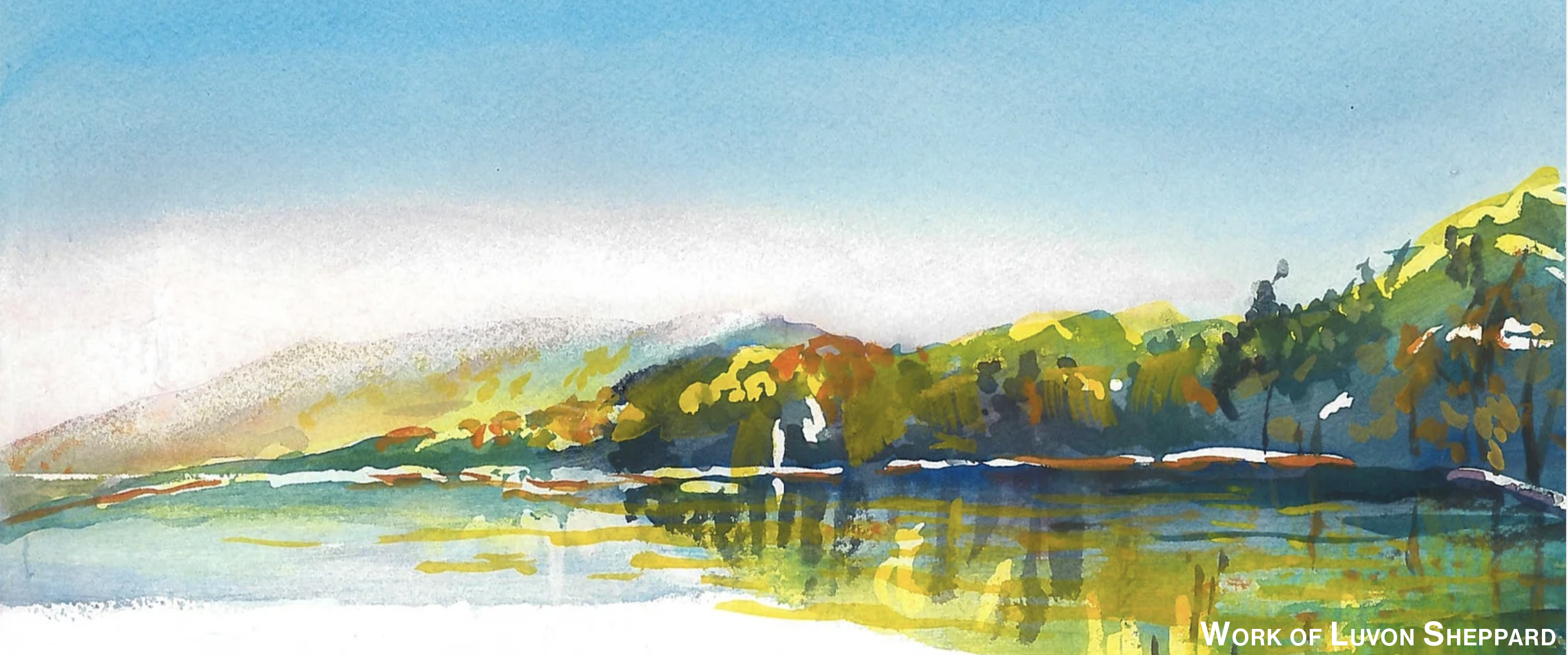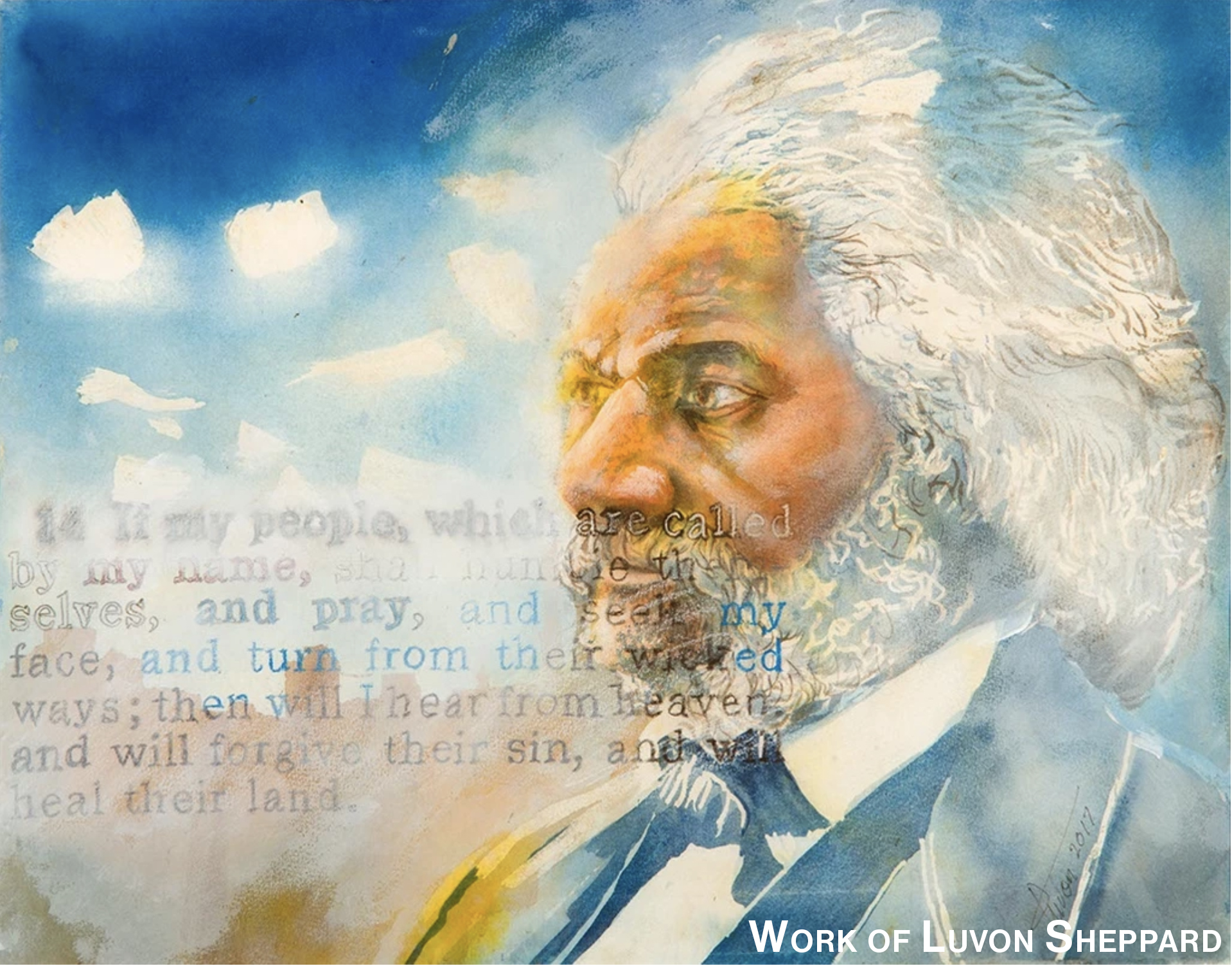Professor Luvon Sheppard: More than Half a Century at RIT | April 2024
- RIT /
- Diversity and Inclusion /
- Newsletters /
- April 2024 /
- Professor Luvon Sheppard: More than Half a Century at RIT

“I teach them things that deal with true life experiences as they relate to art.”
RIT Professor Luvon Sheppard, ’69 BFA, ’70 MST calls himself a “gazer.” The ability to view intently the world around you is probably an important trait to have when you do what he does. Sheppard is an award winning artist whose specialty is watercolor. His works are on permanent display in a number of museum galleries. He is an educator and community collaborator. For 52 years, Sheppard has shared his knowledge with countless students, staff and faculty in the School of Art, College of Art and Design at RIT. When asked what has kept him here for over a half century, Sheppard said there are a number of factors, most importantly, it’s the students.
Sheppard:
I think a great deal of what keeps me here is the students. I enjoy interacting with them and I think they enjoy interacting with me, at least they make me feel that way. I also like the fact that I am still involved with the regional community, and I think I bring that aspect and freshness to the studio.
Describe your responsibilities at RIT?
My responsibilities right now focus on teaching basically watercolor, both contemporary and historic viewpoints. Using different artists like Joseph Turner, John Singer Sargent as well as Winslow Homer. The work they have done with landscape painting, especially “plein air painting” (out in the open air) is something I’ve been interested in for 10 to 15 years. That serves as a foundation or a level by which I do a lot more other personal artwork. I use those experiences- and- my own shows in teaching students that I come in contact with. I teach them things that deal with true life experiences as they relate to art. And I teach classes that are elective classes because the students come from a variety of different majors like computer design, ceramics or printing. They bring a variety of different experiences with them.

You are celebrating more than half a century at RIT! Your journey as an artist and teacher is a long and illustrious one! What is it about “art” that still brings a sparkle to your eye?
Well, you know, I am a “gazer.” I like looking at things and I like to know what it is that I’m looking at. I like that experience. It is a diverse kind of experience. I think if I could live in an art gallery all day, I would be very happy!
Please briefly share some of your professional journey.
I started at the Memorial Art Gallery as Coordinator of Neighborhood Services. That was in the early 1970’s. I worked for the Education Division for about seven years. During that time, Dr. Johnston, who was the Dean at RIT in the Art School came to a high school and heard my lecture about art. He invited me to teach as an adjunct at RIT in 1972. I gradually worked that into a full time position and was hired as an assistant professor, then an associate professor and with my own regional shows and one-man show in New York City, I was able to raise my rank to full professor. I also served as Chairman of the Fine Arts Department for three years.
What was the RIT campus like when you first arrived? You are a graduate. How has it changed over the years, from your perspective?
Yes, I am an RIT grad. I received my undergraduate degree in 1969 and a year later, I got my MST-Masters in the Science of Teaching. I first started attending classes when the art department was downtown. I remember Plymouth Avenue, Spring and Washington Streets, Atkinson Street. With the move to Henrietta, I was one of the first undergraduate seniors there, 1967. I remember there being an art building, a library, the administration building.
What do you want your students to take away from your classes?
I would like my students to take with them a certain level of self-respect and integrity and a good comprehension and understanding of what they’re looking at.
 Your Joy Gallery on West Main Street is a gathering spot where more than creating art takes place. Why did you name it Joy?
Your Joy Gallery on West Main Street is a gathering spot where more than creating art takes place. Why did you name it Joy?
My mother was a minister. She led a church here in Rochester called House of Joy on Webster Avenue. I spent a lot of time there and had the pleasure of playing piano for her and of course the congregation. So, in honor of what I learned in that church and especially from my mother, it is called Joy Gallery.
Your work is on permanent display in several museums including The Memorial Art Gallery. Who are the artists you admire?
Right at the top, I admire Jacob Lawrence and Romare Bearden. They are my favorites of all the artists. They’re right up there with Picasso. They are great minds. They work through what it means to really be an artist. They are the closest thing to what I can see as really being “refined thinkers”, creative and adventuresome in how they describe the world around them.
What are your plans when, and if you retire? What will life be like after RIT?
I would like to set up an artist-in-residency program, possibly connected with a major institution. I would love to be a mentor in that program. I don’t see retirement as part of the package because I am so privileged to be doing what I am doing right now. To be able to teach what I enjoy.
FUN FACTS:
Looking back at your own life, what advice would you give your 21 year old self?
I would definitely focus on health. There are a lot of things I would not do to harm my body and I would stay physically active. I was a fairly decent athlete. As I got older, I didn’t take the time. Workwise, I would say remain in the field that you enjoy and be ready to put the effort in. Remember that there will be moments in life when things may feel a bit “uncomfortable”, but that’s a good thing. Tough experiences can make things much better in the end.
 If you were not a watercolor artist—what career would you have pursued?
If you were not a watercolor artist—what career would you have pursued?
I would be a musician creating music and sound, the full package. I have played keyboard since I was a young child.
What was your very first job?
My very first job was cleaning yards! Cutting grass and pulling up weeds.
What is your favorite spot on the RIT campus?
My favorite spot is not actually on the campus, but across the street from it. The Black Creek boat launch. It has water, the woods and it has the sky and I use those things all the time in my painting. I weave them into my painting.
What would your friends and colleagues be surprised to learn about you?
While there are a few who already know this, I think the fact that I sing and play piano may shock others. I’m a little shy in that area.



